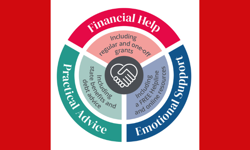
America’s own Russian Candidate-turned-illegitimately-elected “Fearless Leader” continues to spew lies; blatantly contradict himself, as well as reality; terrify Americans and the rest of the world with his ignorance and ineptitude; and then blame it all on the “fake media”. And then there’s Kim Jong-un, Syria…
So, it’s no surprise that people are voracious for information sources that they can trust. At the most insightful and aggressively reported newspaper and magazine brands, the “Trump bump” in readership and actual paid digital and print subscriptions is real. For example, as of April, The Atlantic’s subscriptions were up 50% year-over-year, its site was logging record unique visitors (33.7 million in February), and it even saw a newsstand sales gain in 2016.
While the initial, Trump-spurred momentum may be slowing somewhat, it’s encouraged some of the publishers who’ve been giving away their expensive, high-quality content for decades now to get serious about requiring consumers to pay for it.
Vanity Fair – another brand that’s seen large gains in subs, site visitors and social followers since the election – is reportedly planning to implement a paywall within a few months. That would make it the second Condé Nast title to do so. The New Yorker’s editor, David Remnick, wisely implemented a paywall when NewYorker.com launched in 2001 (although it didn’t go metered until 2014), as media analyst Ken Doctor recently pointed out in The Street.
Doctor’s full summary of the paywall uptrend is well worth reading. But his main argument is that generating at least half of revenue (55%, if possible) from consumers is the linchpin in a crucial “crossover” strategy for once print-dominated media entities. “Make reader revenue – inherently more stable and easier to grow if nurtured with surpassing journalism – a bigger contributor than ad revenue, and the long transformation to a sustainable digital future becomes reachable.”
Doctor reports that The New Yorker hit that 55% mark in 2014 – and as of April, had added 360,000 new subs since the election, to bring its total (print and digital) subs to 1.1 million, the most in its history. He adds that both The New York Times and Financial Times are now at or close to the 60% reader-generated revenue mark.
Some publications have also been able to up their subscription pricing. In the past five years, The New Yorker has increased its sub price by 64% – including a hike in average annual price from $69.99 to $99 last year. “Buyers can opt for digital-only or print-only for $89.99, or pay the $10 extra for both,” and most new subscribers opt for the bundle, reports Doctor. At 2016’s end, the magazine had 107,149 digital-only and 953,397 print and print-plus-digital subscribers. Those most successful with paywalls have found that it’s “more about value than price among the early digital-only subscribers,” Doctor sums up. “They can be priced up, with relatively little direct churn, if the content creates habit.”
But this is still a mini-trend. At this juncture, how many large media brands offer journalistic quality and value compelling enough to establish a significant online paid content stream?
That, of course, remains to be seen.
Not-so-new
And when Doctor calls getting half of revenue from consumers a “completely new business model”, I must object, on principle.
The reality is that the common-sense, hundreds-of-years-old model of expecting readers to pay for the costs of professionally produced content was undermined by publishers themselves long before the internet became a factor. Yes, circulation now represents just a quarter to a third of total revenue for many major magazine brands – but it gradually started dipping below the once-typical 50% or 55% level as a result of the gravely short-sighted model that began to take hold in the 70s: using dirt-cheap subs as advertising rate base fodder. By the time the net rolled around, magazines readily caved to an even more self-destructive model: literally giving away their content in the hope of attracting enough digital ad revenue to cover costs and make a profit. We know how that worked out.
Any progress toward reversing these epic business model mistakes is a good thing indeed. But I can’t help wondering if some current efforts to drive digital content revenue might not end up backfiring again.
Texture, the service that gives users digital access to the content of 200-plus magazines for $95 a year (or $14.99 per month, without the annual commitment) was delivering six million audited circ units as of May 2016. That’s likely higher now, given a marketing push enabled by an investment infusion. The subs and readership no doubt contribute to the ad sales proposition, and the consumer revenue, while it must still be relatively modest (revenue is apportioned based on how much specific issues are read), is better than none. Now, Texture is also being offered in Amazon’s new subscriptions marketplace, Subscribe With Amazon. And in addition to the standard auto-renew, $95-per-year offer, there’s a $7.50 per month offer (half of the direct-sold per-month price). Plus, Amazon, in line with what’s become standard for digital sub “partners”, will take a 30% cut of first-year revenue and 15% thereafter.
In theory, a great way to drive high volumes – importantly, even market subs globally, to Amazon’s one billion users / customers – but with even smaller revenue per Texture user for publishers. Not to mention essentially teaching new generations, worldwide, that they need only pay what amounts to a pittance for the content of 200 magazines, even at $95 per year. Plus, while Texture-driven pennies will add up even faster through Amazon, and audience scale for advertising should benefit, should there be concern about potentially becoming heavily dependent on Amazon for a reader source / revenue base that requires relinquishing direct relationships with readers? How much customer / user data is Amazon sharing?
Publishers also have the option of selling individual magazine subs through the Amazon marketplace, with promises of significant exposure / promotion (we’ve heard that before, from Apple) and pricing / offer flexibility. The New Yorker is included in Texture, but it also has a new-subscriber offer on Amazon: $8.99 per month for the digital edition, plus full access to the magazine’s site and complete online archive, The New Yorker Today iOS app, and the brand’s Google Newsfeed. But even with the lure of additional digital content elements thrown in, can even TNY woo consumers to pay $110 for just its content, with the 200-title Texture deal – including TNY’s own current issues – also available on Amazon?
The ability to build brand awareness and capture reader revenue from that value is also potentially threatened by over-dependence on increasingly unreliable and unmonetisable “partnerships” with the big social platforms, of course (a topic far too complex to tackle in this instalment…).










